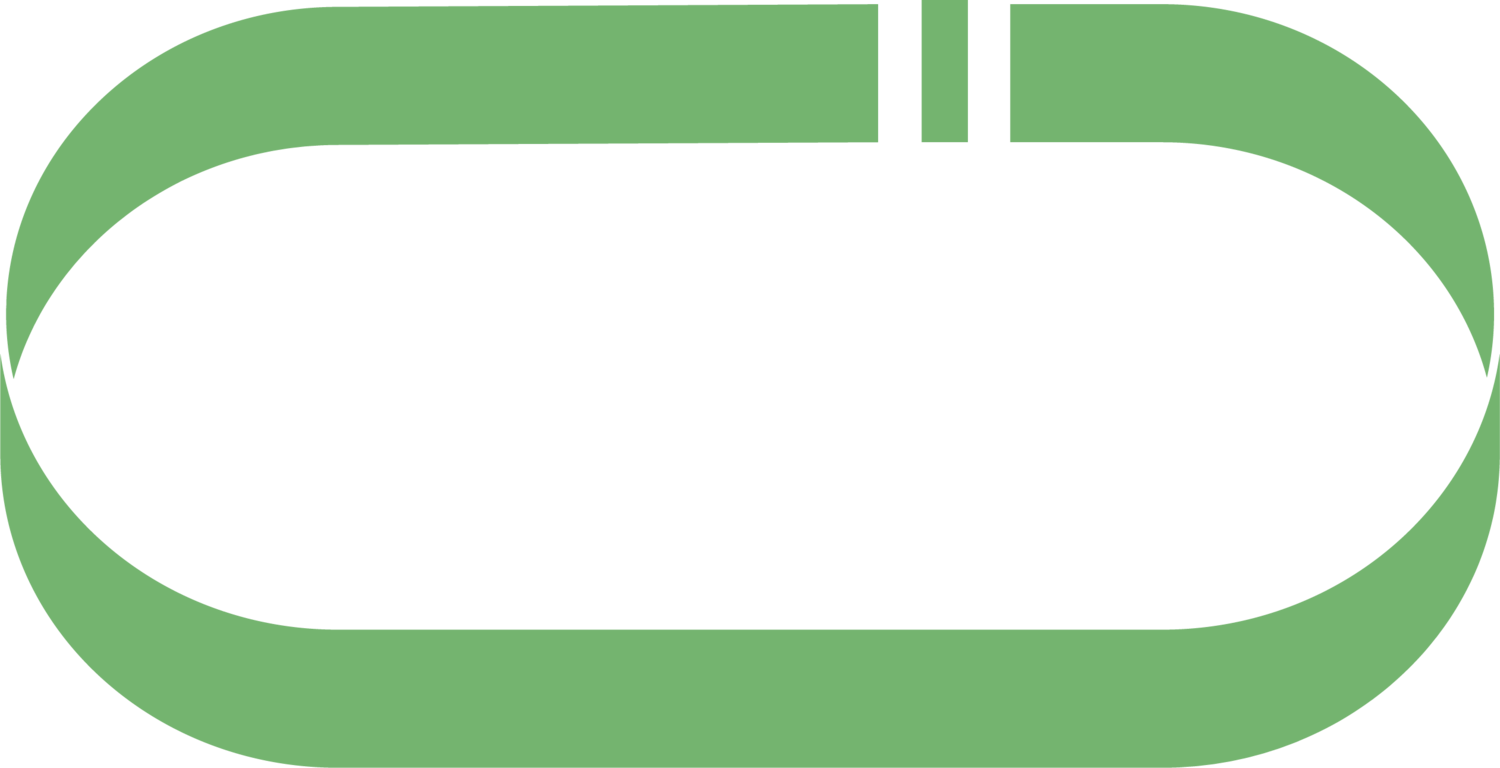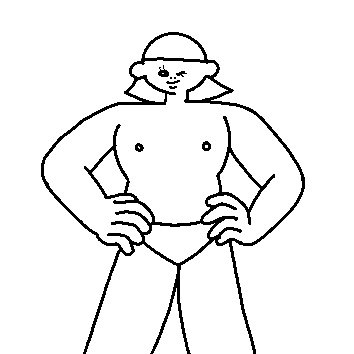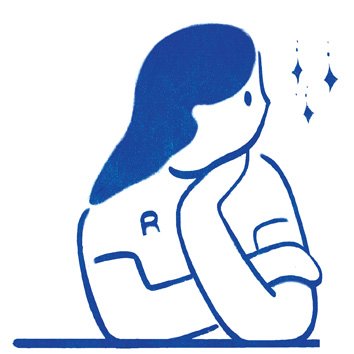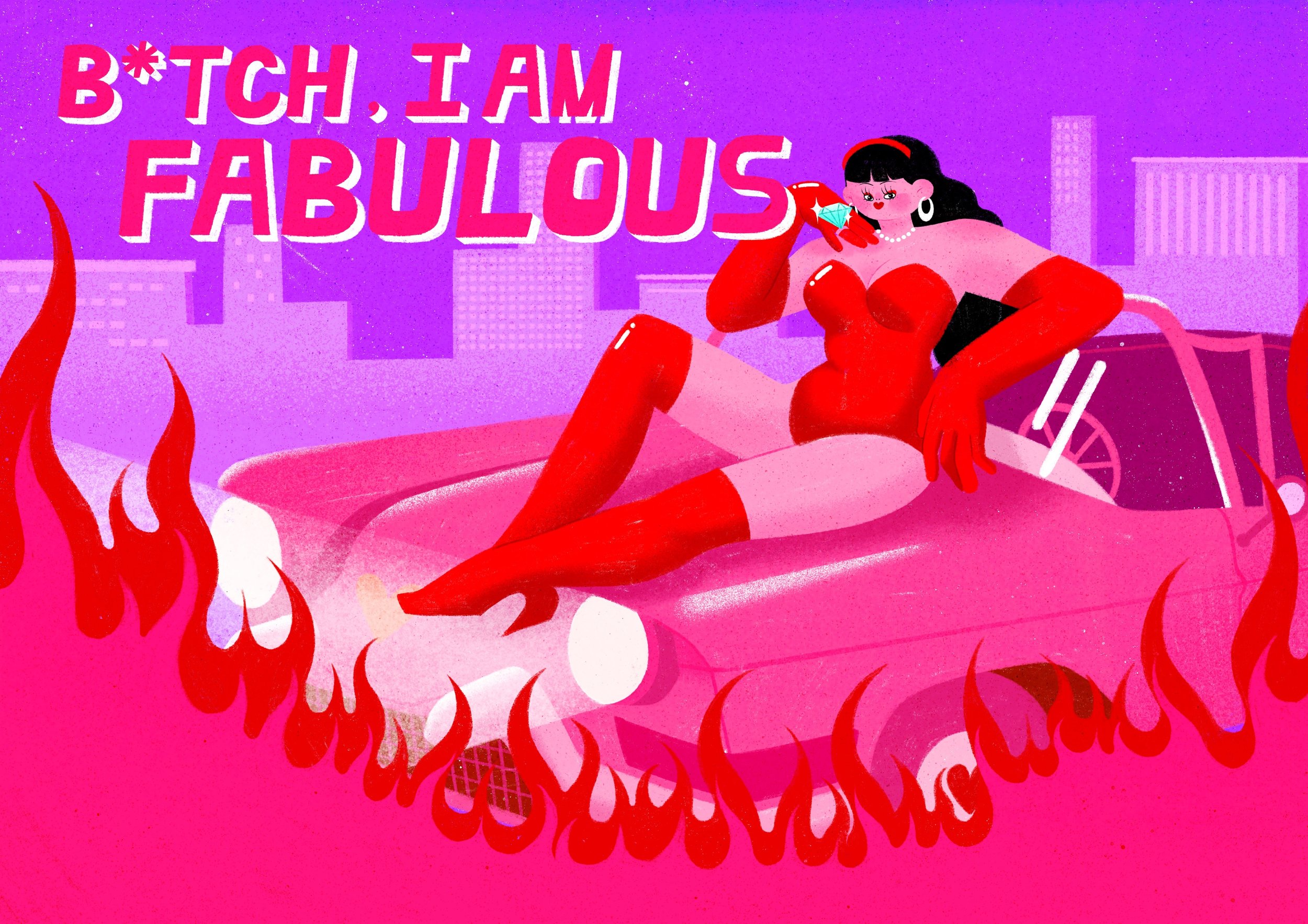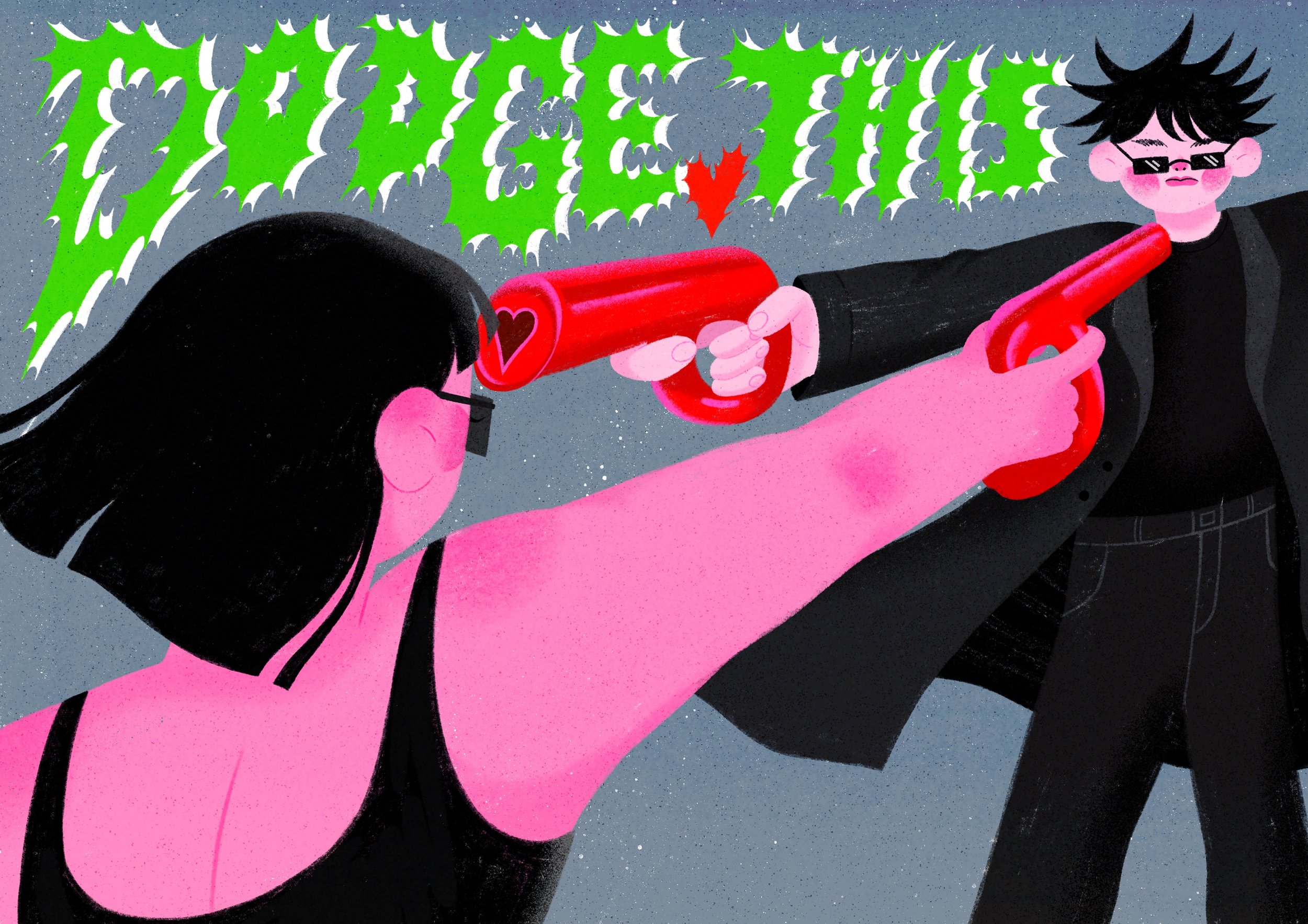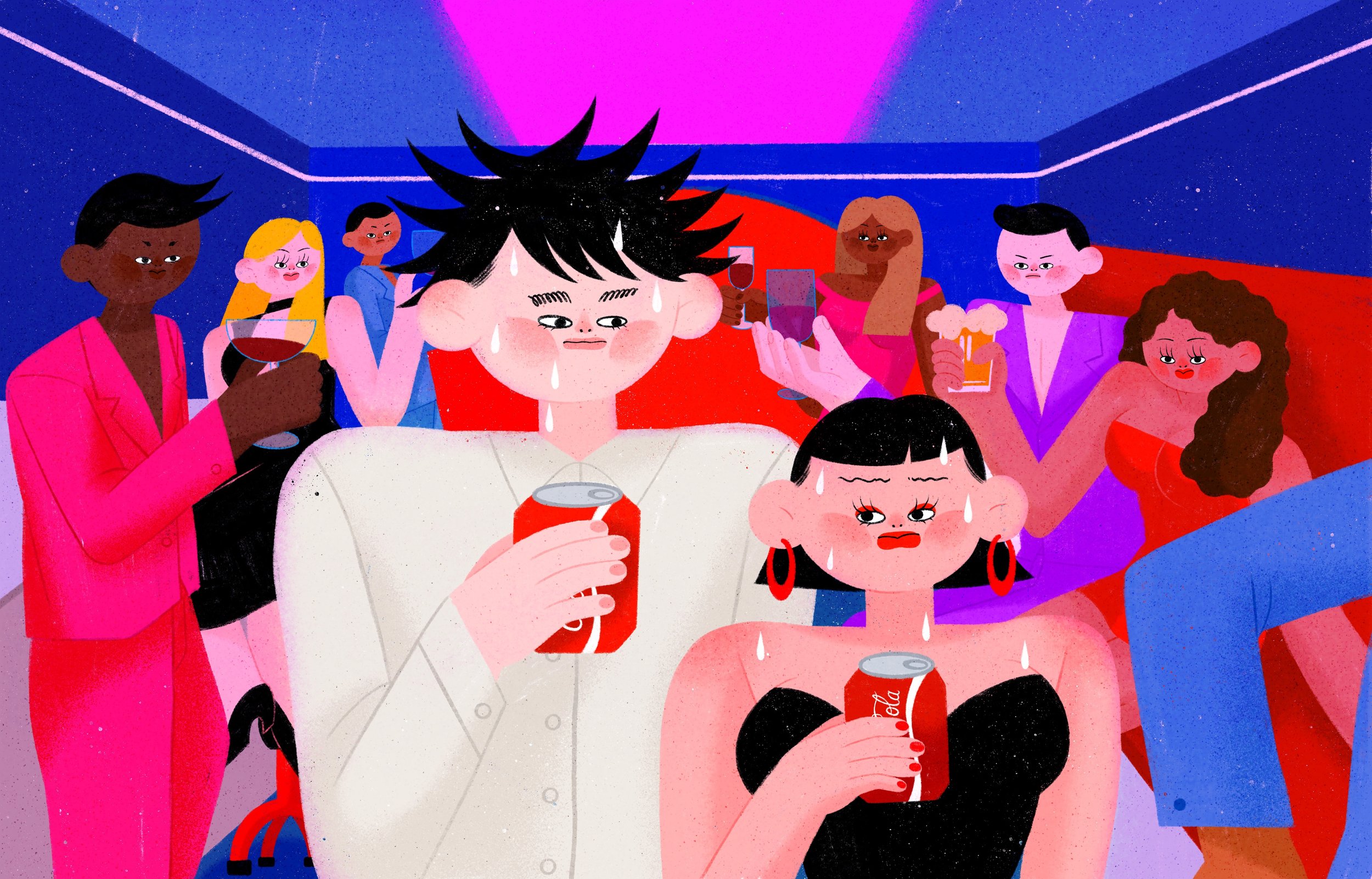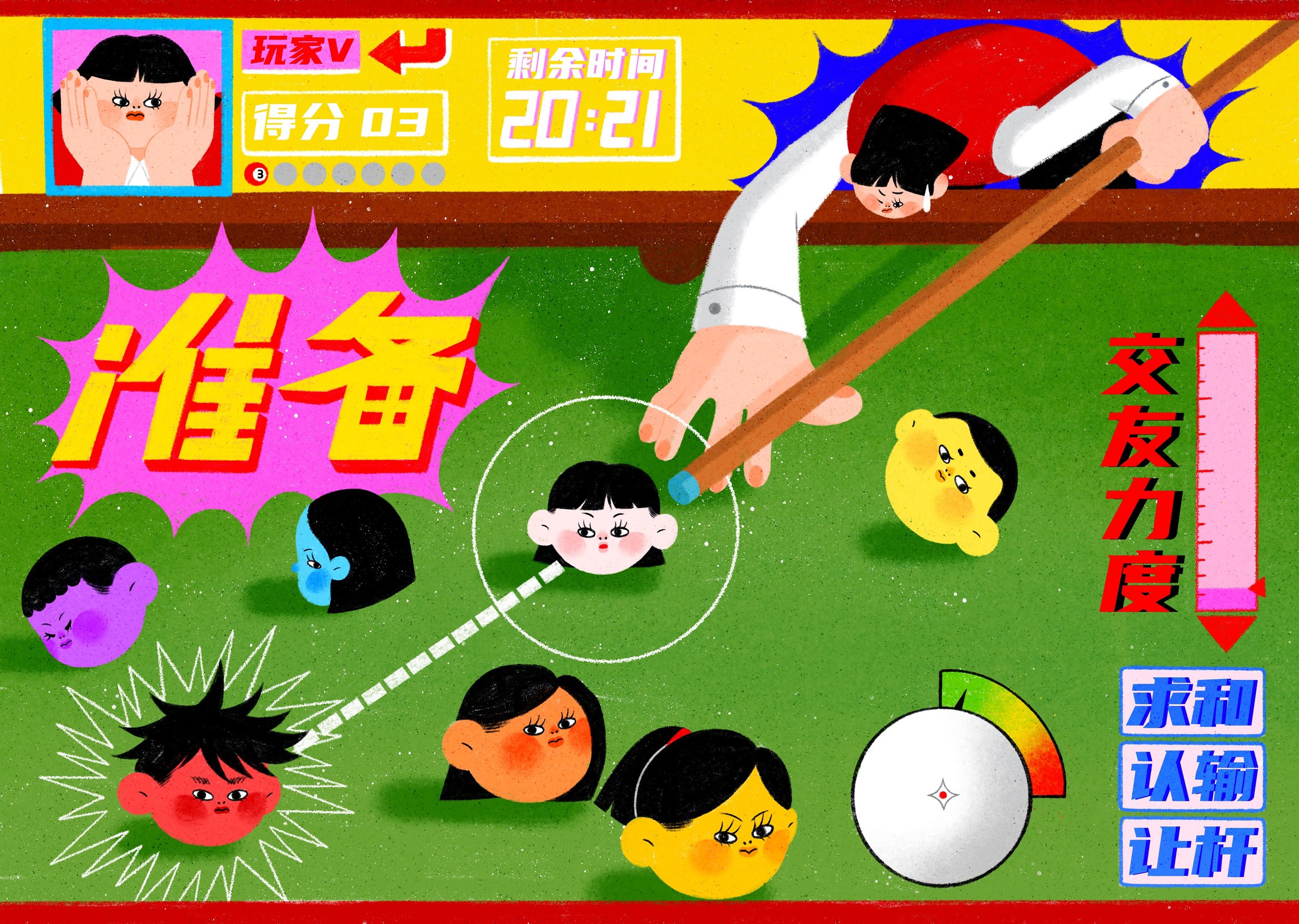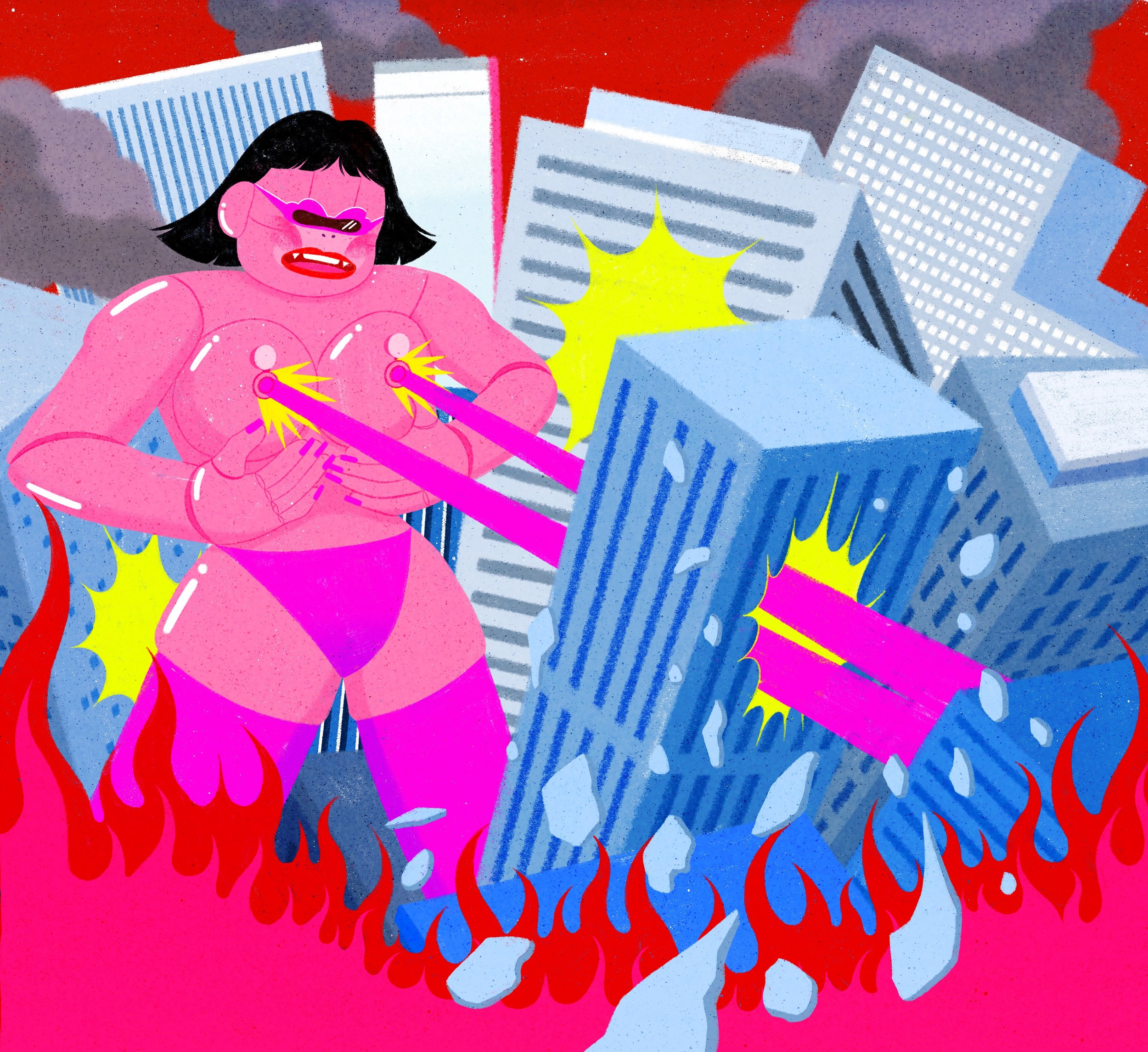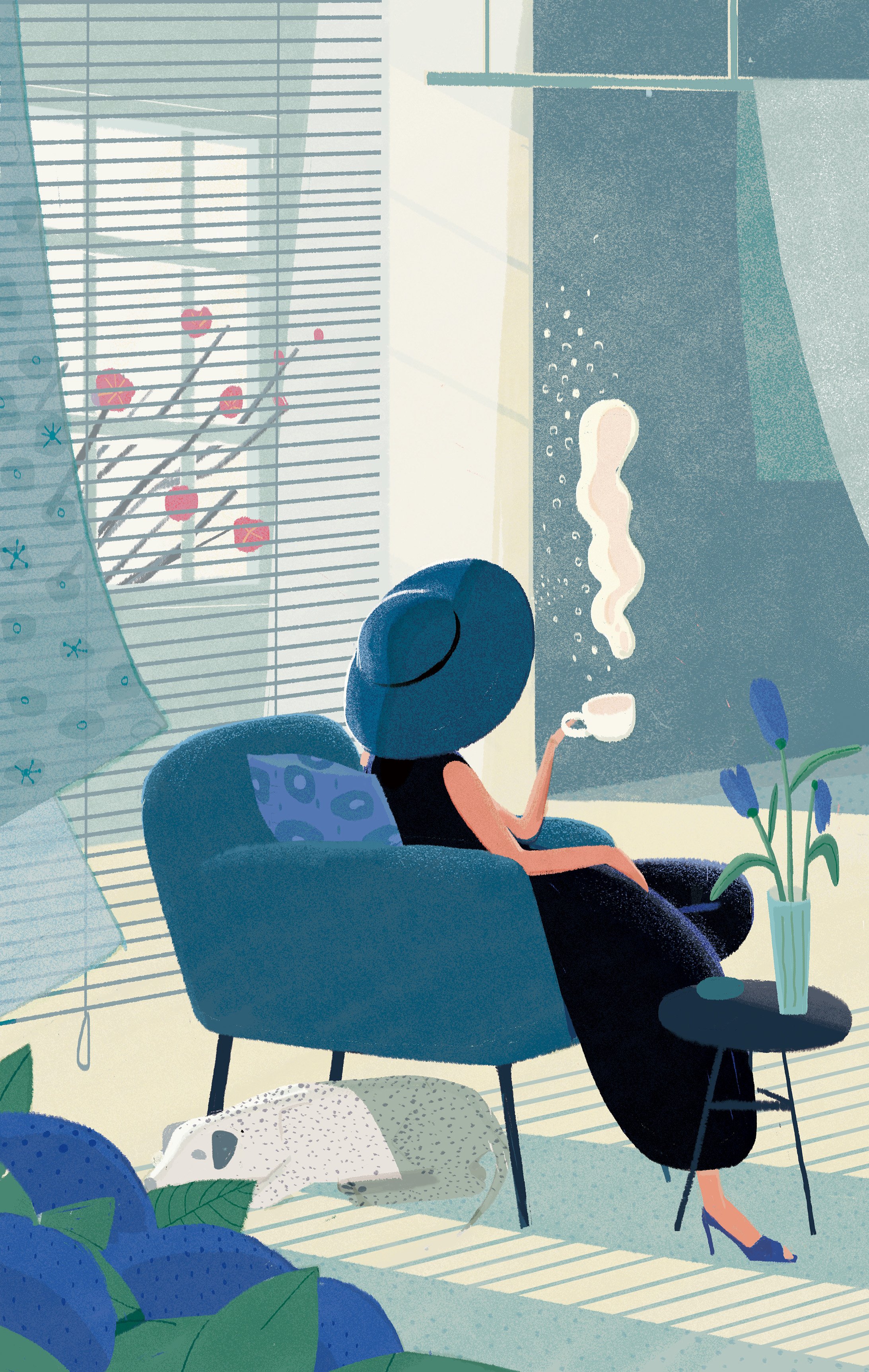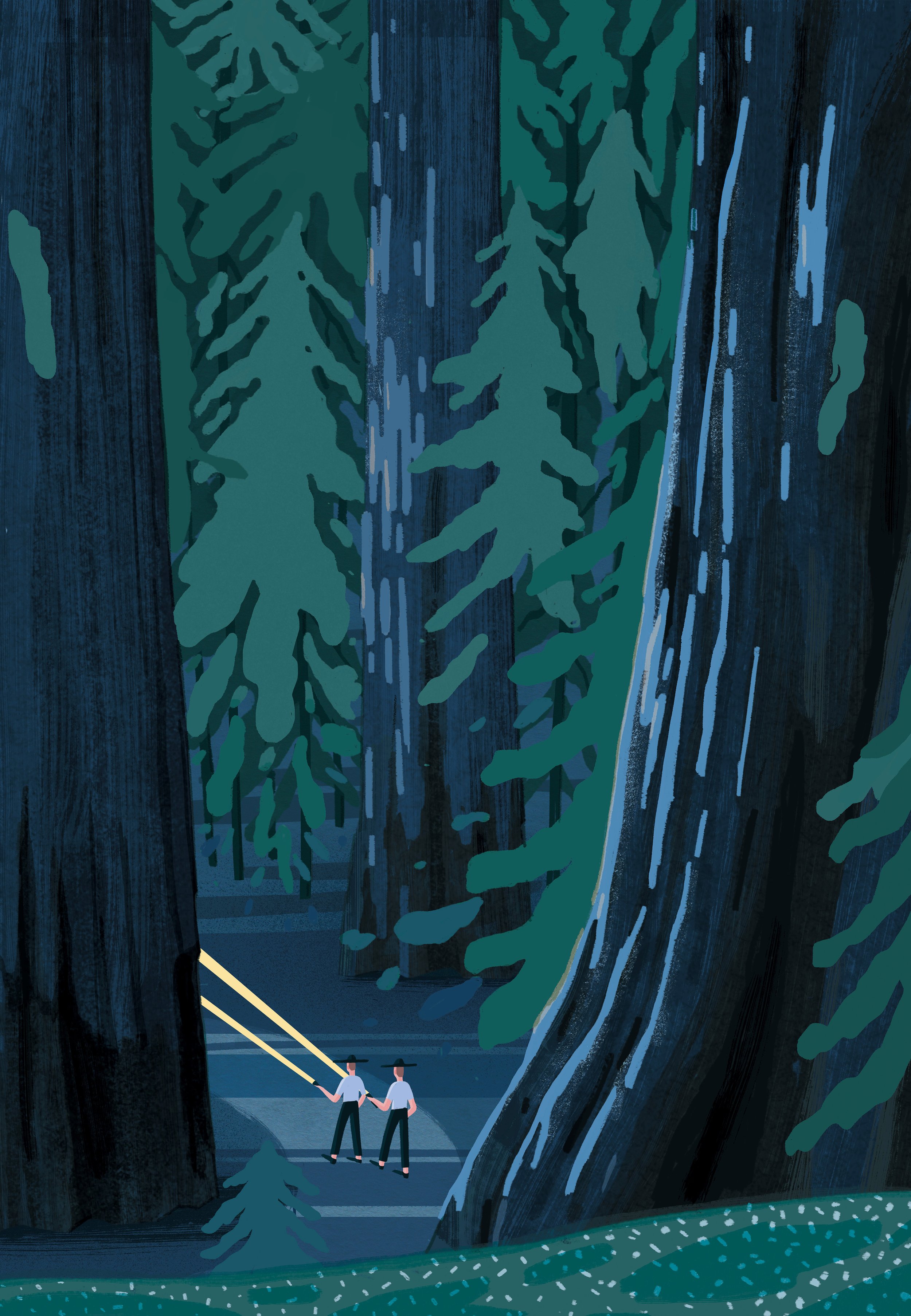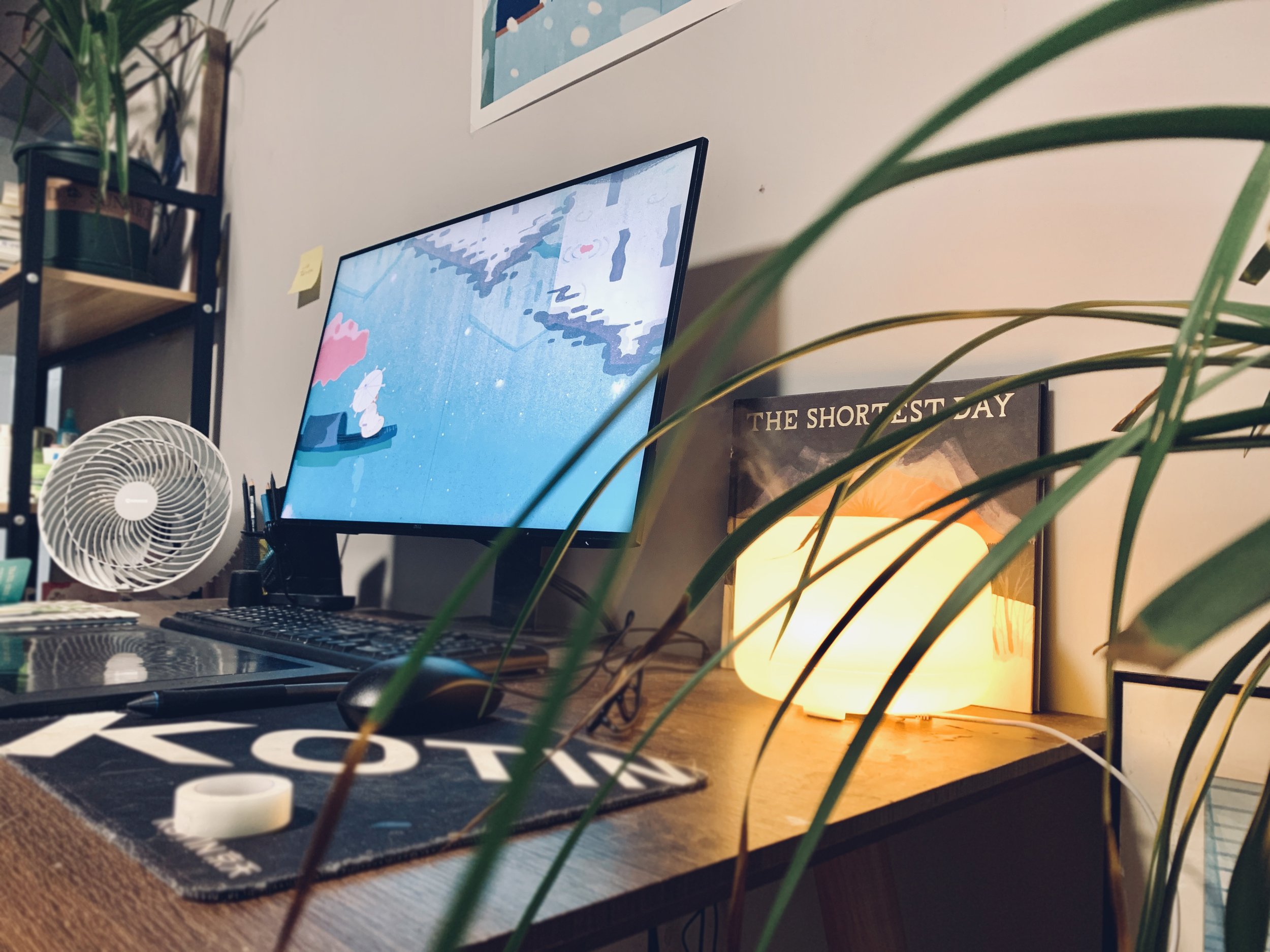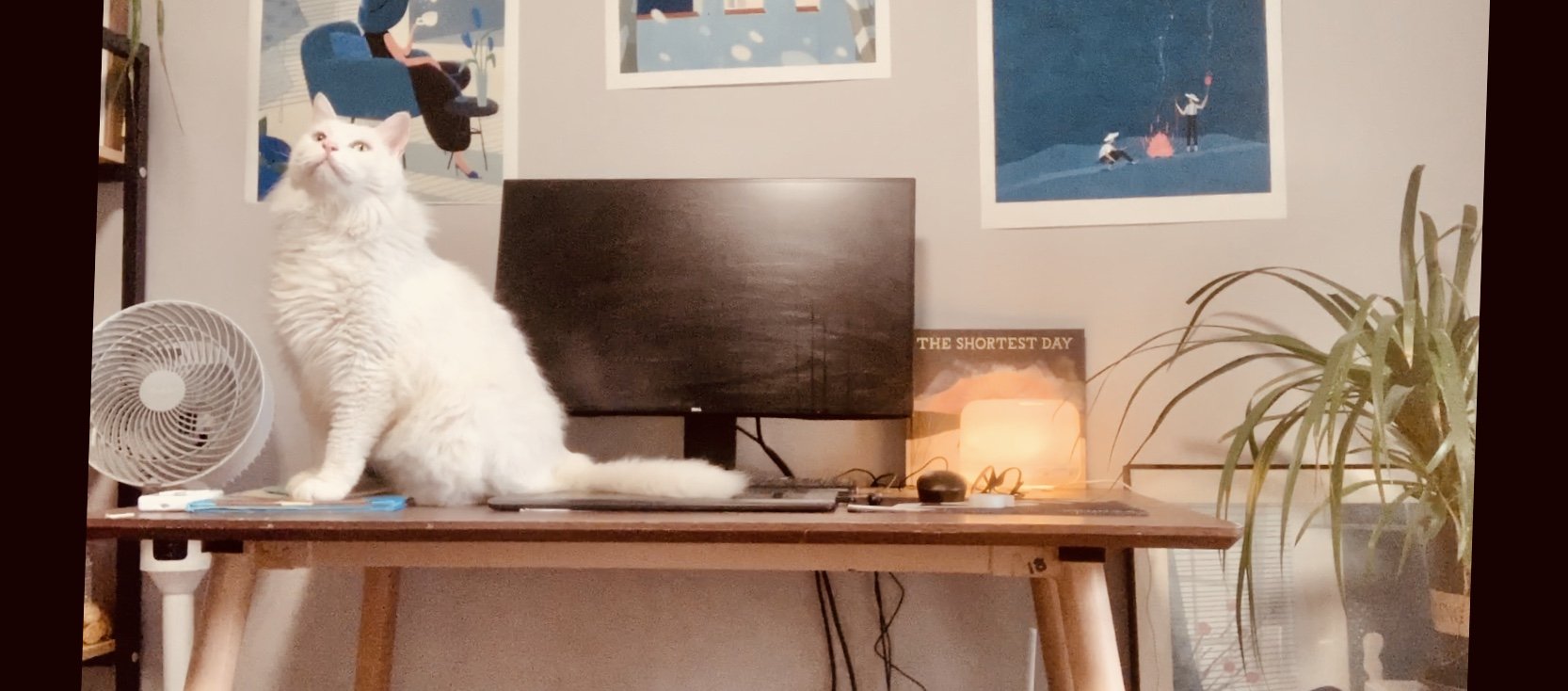A Clash of Eastern and Western Illustration Styles
Illustration by Vivienne Shao
1. If illustration is a friend who has been with you for a long time, what does it look like in your mind?
Vivienne: To me, illustration is like a twin, someone who shares my looks and perspective. As the main character in my illustrations, I use them to express my thoughts and ideas, making them a diary of sorts, and a friend who has been with me throughout my creative journey.
Zili: For me, illustration is like a gentle, intellectual, and airy friend. It's someone who accompanies me through my artistic endeavors, bringing life to my ideas and adding a touch of creativity to my work.
Illustration by Zili
2. How did you become an illustrator? Do you like the label?
Vivienne: I became an illustrator because of my passion for anime since I was young. During my foundation studies in art and design, while others were pursuing fine art, I realized my love for drawing and chose to pursue a career as an illustrator. I always strive to achieve my goals, and I enjoy the label of an illustrator as it accurately represents what I love and do in life.
Zili: I was exposed to illustration classes during my studies in animation design, and I found that I could express my interests freely through illustration. It fascinated me, like a seed hidden deep in my heart. Over time, it began to sprout and grow, and eventually, I decided to pursue a career in illustration.
3. Where are you based now and who do you work for?
V: I am currently based in London, and I work as a freelance illustrator, essentially working for myself.
Z: I currently live in Hangzhou, and my most recent work has been focused on ancient Chinese poetry books.
4. How would you describe your style?
V: My style is female-centric, self-centered, fun, energetic, vibrant, and often depicts nudity.
Z: I view the style of illustration as a set of decoration styles. It's like filling an empty house with furniture of your choice, day after day. The furniture materials are patched together, scattered in different positions, with harmonious color patterns that naturally form a set of styles. Over time, some furniture may be discarded, and new ones added, resulting in a gradual evolution of my style as I continue to explore and experiment.
Illustration by Zili
Illustration by Vivienne Shao
5. How do you usually start a project? What is your preferred creative environment?
Vivienne: I begin by jotting down a few ideas that I like and then I develop them in my mind, linking them together to form a series or project. I prefer to work at home, either by myself or with my boyfriend, and I usually set the mood with music that matches my mood, and enjoy a cup of tea while I work.
Zili: For me, starting a project usually involves a mix of anxiety and excitement. As the project progresses, I find that my initial anxiousness gradually calms down.
6. What's your secret to staying inspired and motivated?
V: I once said that I want to be an illustrator until I'm 90 years old because I believe that creativity gives my life meaning. I can't imagine doing repetitive work for the rest of my life. I also love to watch films and documentaries, explore and discover new things, and have conversations with my boyfriend about weird thoughts and ideas. Communication is crucial for me to stay inspired.
Z: I usually take breaks from work temporarily to experience life and nature. I engage in activities like sports, climbing, shopping, traveling, meeting friends, and listening to music to keep myself motivated and inspired.
7. Who is your dream client? Why?
V: My dream client is BTS, as I am their diehard fan and it would be a dream come true to work with them.
Z: Among all the questions, this is the one I've pondered over for a long time, and my answer is myself. While I understand the purpose of working with clients is to earn an income, I hope to be able to support my work through my own efforts in the future. In the limited time we have in life, apart from making a living through art, I also have a bit of selfishness in satisfying my own preferences. At the same time, I aspire to create work that holds meaning and withstands the test of time.
8. What kinds of tools do you typically use and how do they impact your work?
V: I usually start with a pencil for sketching my ideas, as drawing on paper gives me a sense of freedom and boundlessness. I feel that working on tablets or screens can sometimes limit my creativity. Once I've decided on my ideas, I scan the sketch and continue working on it using my iPad until it's completed. I find that using digital tablets makes my work easier, especially when I need to make changes quickly for commission work.
Illustration by Zili
9. What challenges do you face as an independent illustration artist, and how do you overcome them?
Vivienne: One of the challenges I face as an independent illustration artist is the uncertainty of income. Freelancing can be unpredictable, with fluctuating income and irregular workloads. To overcome this challenge, I try to diversify my income streams by taking on different types of projects and clients, such as commissions, selling prints or merchandise, and collaborating with other artists. I also make sure to budget and save for slower periods, and I am constantly looking for new opportunities to expand my client base and reach.
Zili: As an independent illustration artist, one challenge I face is self-motivation and discipline. Without a fixed schedule or external deadlines, it can be easy to procrastinate or lose motivation. To overcome this challenge, I try to set personal deadlines for my projects and establish a routine that includes regular work hours and breaks. I also find it helpful to connect with other artists for support and accountability, and I seek inspiration from different sources to keep my creativity and motivation flowing.
10. How do you handle creative block or moments when you feel stuck in your work?
V: When I encounter creative block or feel stuck in my work, I try to take a step back and take a break. I might go for a walk, do something unrelated to art, or engage in activities that inspire me, such as watching movies, reading books, or exploring new places. I also find it helpful to talk to my boyfriend or other artist friends, bounce ideas off them, and get feedback. Sometimes, a fresh perspective or a change of scenery can help break through the creative block and reignite my inspiration.
Z: When I experience creative block or feel stuck in my work, I try not to force myself to create. Instead, I take a break and do something else that I enjoy or that helps me relax, such as listening to music, meditating, or practicing yoga. I also try to change my creative environment, whether it's moving to a different physical space, rearranging my art supplies, or trying a new art technique. Sometimes, taking a step back and giving myself time and space to recharge can help me overcome creative block and come back to my work with a fresh perspective.
11. How do you balance your personal artistic vision with the expectations of clients or other external factors?
V: Balancing my personal artistic vision with client expectations or other external factors can be challenging at times. While I value my artistic freedom and expression, I also understand the importance of meeting the needs and expectations of my clients. To achieve a balance, I try to communicate openly and effectively with my clients from the beginning of a project, setting clear expectations and discussing any potential changes or compromises. I also try to find a middle ground where I can incorporate my personal artistic style and vision while still fulfilling the requirements of the project or client. It's a constant negotiation and finding the right balance between my creative expression and meeting external expectations.
Z: Balancing my personal artistic vision with external factors can sometimes be challenging. While I have my own artistic style and preferences, I also need to consider the expectations of clients or other external factors, such as deadlines or project requirements. To strike a balance, I try to find common ground by discussing and understanding the needs and expectations of my clients or other stakeholders. I also try to communicate my artistic vision and provide explanations for my creative choices. However, I also believe in staying true to my own artistic voice and not compromising my artistic integrity. It's important to find a balance that allows me to express my personal artistic vision while still meeting the requirements of the project or clients.
Illustration by Zili
12. Can you recommend a movie that you enjoy watching, as well as three soundtracks that you enjoy listening to while working?
Vivienne: I would recommend the movie "Tales of Tales". As for soundtracks, I usually listen to Lana del Rey a lot while working, particularly the song "Money Power Glory". Her songs have a magical quality that transports me to fantasy lands and inspires my creativity.
Zili: Lately, I've been into retro music and tend to get bored with songs easily. However, some of my current favorites for working are from older soundtracks that evoke a sense of nostalgia and inspiration.
Zili’s Studio

